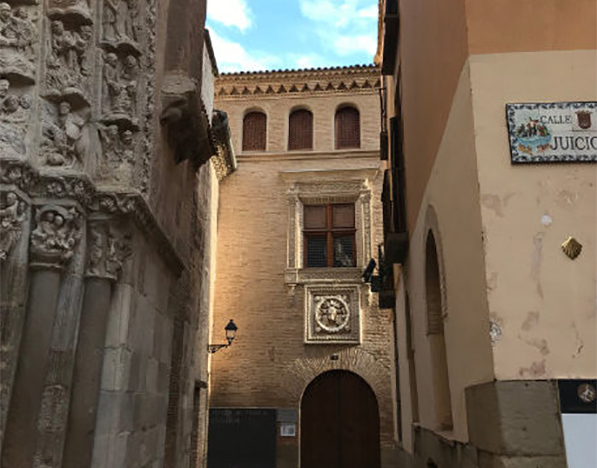
Calle Roso, 2 (next to the cathedral)
31500 Tudela
Telephone: 948 40 21 61
info@museodetudela.com
SCHEDULE:
From March 1 to December 8
Monday to Saturday: 10:00 a.m. to 1:00 p.m. – 4:00 p.m. to 7:00 p.m.
Sundays and holidays: 10:00 a.m. to 1:00 p.m.
From December 9 to December 18
Monday to Friday: 10:00 a.m. to 1:00 p.m. – 4:00 p.m. to 7:00 p.m.
Saturdays and holidays: 10:00 a.m. to 1:00 p.m.
Sundays: closed.
From December 19 to January 9
Monday to Saturday: 10:00 a.m. to 1:00 p.m.
Sundays and holidays: closed.
Closed: December 24, 25, 26 and 31, January 1 and 6.
RATES
Adults: € 4
Children (7-12 years): € 2
Reduced: € 3 (students, unemployed, retired, ICOM members, over 65s, youth card, large family, people with disabilities)
Free: 0-6 years old, Wednesdays from 5pm to 7pm. (except groups), membership card of friends of the Cathedral of Tudela, May 18, September 27, October 12, December 3 and 6.
DESCRIPCIÓN
The recently-created museum of Tudela, inaugurated on 26th June 2000, is located in the decanal palace adjoining the cathedral.
The palace dates back to the 15th century, with major architectural modifications taking place at the beginning of the 16th century, directed by Don Pedro de Villalón y Calcena, the most famous of the deans of Tudela, to make the palace fit to accommodate kings and popes whenever they passed through the city. Further modifications and extensions to the palace were undertaken in the 18th and 19th centuries.
The palace rooms serve to exhibit items of religious art from various churches in Tudela: a collection of statues of different periods and styles, Renaissance altar pieces, some magnificent silverware, Baroque canvases, principally the work of Vicente Berdusán, considered to be the best 17th century painter in Navarre, and oil paintings such as the 16th century Final Judgement, attributed to El Bosco.
Also on display are the archaeological vestiges of the former mosque of Tudela and a collection of pottery items. Visitors can also enjoy a walk through the cathedral cloisters, a unique piece of architecture and a superb example of the Spanish Romanesque style. The Cathedral adjoins the museum, housing artistic works of incalculable value from the medieval period (the Romanesque White Virgin, the 15th century Gothic altarpieces, burial sculpture), the renaissance period (choir by Esteban de Obray) and the baroque period (Chapels of St Ana and the Holy Spirit).







